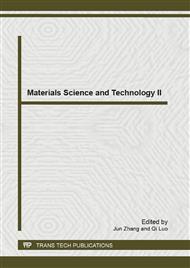p.413
p.418
p.423
p.430
p.434
p.438
p.443
p.451
p.455
Evaluation of Wear Behavior of Wheel Steel Using Twin-Disc Test
Abstract:
The wheel/rail contact is chracterized by high contact forces and small contact areas. Although the standard of railway wheel has sustained, the damages of railway wheel have been occurred in service running. The railway wheel damage can be divided into three types; wear, contact fatigue failure and thermal crack due to braking. In curves, especially, large sliding on the contact patch occurs at the wheel tread and flange. Due to this sliding, wear increases in the wheel/rail contact under the dry condition. To reduce wear, more durable wheel steels are required. In order to develop new materials and predict wear, It is important to understand the wear mechanism in wheel steels. In this study, we have investigated the wear characteriscs of RSW1 railway wheel steel using twin disc wear testing. Also the comparative wear behavior of RSW1 and R7 wheel steel under rolling-sliding contact was performed.
Info:
Periodical:
Pages:
434-437
Citation:
Online since:
July 2013
Authors:
Keywords:
Price:
Сopyright:
© 2013 Trans Tech Publications Ltd. All Rights Reserved
Share:
Citation:


